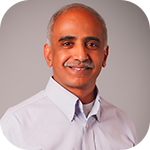0:00:02.2 Emily Wearmouth: Hello and welcome to another edition of the Security Visionaries Podcast, a place where we grill experts on a wide range of cyber data and other related topics. I am Emily Wearmouth, and on today's episode, I'm joined first of all by my co-host, Max Havey. Regular listeners will know we usually alternate and we don't often share our interviews, but despite numerous rounds of rock, paper, scissors, we couldn't agree on who won the rights to host today's episode. So you get us both. Welcome Max.
0:00:28.1 Max Havey: Thank you for having me Emily. Always great to be on doing a conversation like this with you. I'm very excited for this one too.
0:00:34.3 Emily Wearmouth: Me too. So let's explain why were we both so keen? Well, this is an interview that we've been wanting to land for a while, and it's a double. So we have two guests and I guess two hosts makes sense. Let's stop teasing and dive into the introductions. Sanjay Beri is Co-founder and CEO of Netskope. He's a Canadian living in California and has spent the past nearly 13 years building a company from scratch into what was recently revealed to be a $500 million annual revenue cybersecurity vendor. And it's got dots in all the right boxes on the analyst reports to show leadership across cloud and web security, as well as secure networking. So welcome to the podcast, Sanjay.
0:01:11.2 Sanjay Beri: Thanks, Emily. Thanks, Max. Great to be here.
0:01:14.7 Emily Wearmouth: Now, in those intervening years, Sanjay was never alone and I'm incredibly excited that he has joined on today's episode by his co-founder Netskope CTO, Krishna Narayanaswamy. Krishna has been on the podcast before talking about patents, and I highly recommend going into the back catalog to listen to that one if you missed it. We were celebrating him being awarded his 100th patent, which I think officially makes him a security visionary by anybody's standards. So welcome back to the podcast. Krishna.
0:01:42.1 Krishna Narayanaswamy: Great to be back here Emily and and nice to be here Max as well.
0:01:48.2 Emily Wearmouth: So nearly 13 years ago, you two both foresaw the digital transformations that we've subsequently lived through. With your fellow founders you anticipated cloud adoption was gonna grow faster than people were predicting, and you recognized that the threats landscape was gonna shift as a consequence of that. You made the call and you built the technology and the company that serves those needs. And the success of Netskope, I suppose, is testament to that foresight. So Max and I thought you'd be the perfect guests for us to interrogate, to try to get a better understanding of what's ahead, what will the next 10, 13 years hold for us all, and what are you planning, what have you got in your little back pocket to help us grapple with those new challenges that we're all gonna be facing. So I hope you're ready for some tough questions.
0:02:27.6 Sanjay Beri: We are.
0:02:29.7 Krishna Narayanaswamy: Definitely.
0:02:30.8 Emily Wearmouth: Brilliant. Well, I'm gonna dive straight in. We have no baby steps. We are gonna talk quantum. So stories about quantum advances pop up every now and then, and in security the focus is very strongly on encryption and we're seeing NIST driving the search for new encryption standards that will hold up in a quantum world. But that's sort of where the media coverage seems to stop. And I've seen very little about the impact on data creation, protection, even data utility. And I wanted to ask you both, what do you think will be the impact of quantum advances on either data or security or both over the next decade? And importantly, I suppose, how should security or tech professionals start to plan for those changes? I don't know if one of you wants to go first.
0:03:11.0 Sanjay Beri: Krishna definitely should go first.
0:03:14.2 Krishna Narayanaswamy: I think it started. And so we've been looking at the space of quantum post quantum cryptography and what its impacts are from a Netskope perspective, right? So obviously Emily, as you rightfully pointed, encryption is the one that is always talked about, which is, hey, today we have some strong encryption algorithms, right? Which is what forms the basis of all the communications and trust that we have over the public internet. Now if you start reading the press, you see a lot of information about quantum computing and how that can defeat the encryption algorithms that we have today. Now, if you peel it back and look at it, there are two types of encryption that is being widely used in the internet. One is what we call asymmetric encryption. The other one is symmetric encryption. And if you look among these two, the symmetric encryption is very strong.
0:04:03.3 Krishna Narayanaswamy: So even with post quantum computing, it is shown that it's going to take many decades before somebody can crack something that's encrypted today using these quantum computers, right? The beacon link is the asymmetric encryption, which is the public private keeper, right? That is used for establishing the session. Normally the way communications work is you establish a secure session and then you start encrypting using the symmetric encryption. So the asymmetric encryption is the one that we need to focus on in terms of its impact. We have experts who are advisors to us at Netskope, like Dr. Dan Boneh, who's a world renowned cryptographer from Stanford, has been guiding us. And from all our knowledge of where things are going, even for asymmetric encryption, it's not of immediate threat. You're probably looking at least a decade away. And right towards that end, as you rightfully pointed NIST is coming up.
0:05:00.5 Krishna Narayanaswamy: NIST put out a contest, and then based on the submissions they have shortlisted a few of the algorithms. We are keenly observing the progress there. One of the most commonly used libraries, OpenSSL has a project that is starting to incorporate some of these algorithms. Now, the problem with these new algorithms is both sides of the parties have to adhere to it, otherwise just Netskope doing it alone is not going to be of use. Right? So that's where things are and I think we'll keep watching it and we will make sure that Netskope's roadmap accounts for these advances that are happening.
0:05:36.0 Emily Wearmouth: And Sanjay, are these conversations that are coming up from your customers a lot? Are there... There's been conversation about there hack now, crack later, and whether some of the threat actors today are already planning for quantum. Is this something that's part of daily conversations with customers or are they not yet worrying too much?
0:05:54.7 Sanjay Beri: I would not say daily, and I really think it depends on the type of customer. So I would say some of the large financial services customers are the ones who may bring this up. These are companies who themselves have thousands of people focused on security. Perhaps some of the most critical assets in the federal side as well. This is another area where it comes up, but I would say it isn't yet the walk into a meeting, people want to talk about this. It's not at that stage. And I think it's, you know, frankly to the point where Krishna mentioned. We focus a lot on thinking 5, 10 years ahead, right? We'll both be here doing this, driving this company. And so we have to invest in things that are quite far out. And I think some of those companies, federal financial, they have the capability and they need to do that as well, right?
0:06:46.4 Sanjay Beri: Pragmatically, when is this gonna become an issue? How do I plan for this now? What's my view on it? What kind of standards do I want to drive? 'cause they'll all be bitten by five different standards and the industry doesn't come together. And so, yeah, I think it's occasional and for people who do think about the future, that's where it comes up. And so we've actually written a few, couple one two pagers on our stance on it. Dr. Dan Boneh just used, I used to be his student a long time ago at Stanford when I asked him to be part of our advisory board. I'm like, please don't look at my grade in your class, in your master's security class. One of the things we believe as you bring on experts and people who are much smarter than you, like for example, Krishna and Dr. Dan Boneh. And so we feel we have a good grasp on what is needed to be done, but we have to focus on what can also be implemented. And what's real. So that's why I'd say it's more in the R&D kind of lab phase right now.
0:07:50.2 Emily Wearmouth: I've got one more quantum question, which is, we've talked a bit about security. What about the changing data behaviors? We might see quantum drive. It's about much faster processing. We know we're heading into a world where data is just gonna continue to grow. Is that something that you are having to think about when you are planning infrastructures, when you are planning user behaviors into data access? Does Quantum yet feature on those plans?
0:08:12.4 Sanjay Beri: Not fully. I mean, I will tell you, like if you ask me right now, more pragmatically what factors into infrastructure, usage, costs, manipulation of data, it's really more AI and ML. Right? The reality is that the amount of data that you need, the amount of processing in many cases that's more top of mind. And so that's probably more the focus for us is since we focused on that for what, six, seven years with our Netskope AI labs. I would say that's more where we are right now, focusing on that.
0:08:47.3 Emily Wearmouth: Brilliant. You've set Max up perfectly for his question.
0:08:50.6 Sanjay Beri: Oh. Okay.
0:08:52.6 Max Havey: Yeah. And I kind of was hesitating to consider AI a long-term trend because it's pretty important to acknowledge that it is very much a today challenge. But what are the big shifts that you expect to see caused by AI advances in the next decade, specifically around the shifts that are being less anticipated when it comes to data ownership, security rights, and usage?
0:09:14.5 Sanjay Beri: Well, so a couple things. AI is not new. I think a lot of focus recently on generative AI which is a subset of AI. And Netskope we've been using AI and Krishna has been working on the team on neural networks and convolution neural networks to advance data protection and threat protection and behavior analysis. All things around stopping attackers and beyond. And so, like even we used to say in the pandemic, people would rip through and exfiltrate virtual whiteboards and all existing technology wouldn't solve that very specific problem. And so we developed a neural network to solve it. And so for one, I'm a believer that AI is not a... For the future. There's very practical, pragmatic use cases which we've actually implemented in production that are really delivering value in terms of stopping data exfil and threats. And so definitely that is one piece I think that we all need to remember as, wow, okay, this is actually here and has been for a while and it's real.
0:10:12.2 Sanjay Beri: And I think how people have thought about it now is that, wait, generative AI, which sucks in, like, in our case, we're very targeted. We're not trying to take in everyone's data and train on it, we're this model could be focused on detecting credit cards, driver's licenses, passports. So it's more enterprise AI, very targeted, very specific. And so it isn't, hey, let's suck in the world's data, let's take in content that other people created. I think you see that a lot with consumer AI apps. And on the enterprise side, we have to be very careful. If people wanna train our models, we don't say put it in our cloud, we give them something in their premise, they can train on it privately, keeping their data to themselves, and then we take the features into our cloud. And so anyways, we have built and use enterprise AI, we do it with the notion that people wanna keep some of their data private, doesn't mean they can't tune our models. We have built capabilities where they can still do that privately. And so I think in the enterprise, they're just more cognizant of the fact that great, you can't just take people's data and yet there's real use cases. So...
0:11:32.7 Krishna Narayanaswamy: Yeah. I mean, so absolutely agree with what Sanjay said. Recently I was at a CIO conference of I would say a few hundred CIOs all over the US. And what I heard there, which was very eyeopening, was they see this whole AI shift as a generational shift from a corporate IT perspective. So the examples they were giving was, Hey, back in the '90s, there's a shift from mainframe to client server based applications that is like version one. Then you fast forward to post 2000s, the whole mobile and cloud was the next generation shift, right? When it comes to corporate IT. They see that AI and gen AI and the capabilities that it can provide for enterprises as the third generational shift. And everybody is very positive in terms of investments they want to make. They don't wanna be left behind, so to speak. Now, at the same time, the other side of the coin is you are, you have to be worried about the data. AI is all driven by data, right? And how do you secure the data? How do you ensure, as Sanjay said, that it's not being trained for purposes that compromises the data. And so that gives Netskope a great opportunity for us from a platform perspective to help customers, right? To use these gene AI and modern AI tools in a more secure manner.
0:12:49.5 Max Havey: I think that really speaks to the way that a lot of conversation around gen AI, especially in the last year or two, has been around whether to allow or to block versus enabling and finding ways to safely enable and securely enable folks to use these apps. And making sure that there are those practical, pragmatic use cases that you're solving for, and that you are being targeted and specific with the way that you're doing. It's not taking in all of the data that they have. It's treating it more like a scalpel than a sledgehammer as I've heard thrown around before.
0:13:17.9 Emily Wearmouth: And I'm interested in the way the debate is evolving around not just protecting your data when interacting with these systems, but also starting to think about protecting these systems from data infiltration that might then spin out different results. And I think that's a fascinating shift in the conversation. I'm looking forward to that while rolling over the coming months as well.
0:13:35.7 Sanjay Beri: Yeah. I remember this meeting or I was traveling and a CIO had asked their team, Hey, do we want to use generative AI to solve some of our problems to innovate? And everyone's like, yes, absolutely. Then they asked, well, are we using it? And they said, no, we're not using it because of privacy security concerns. And I think what Krishna said is basically our job is to let them say yes as always but put guardrails around it. And so not only using it, but enabling people to say yes and securely use it and unleash the innovation in their own companies. It's a very powerful thing.
0:14:20.1 Emily Wearmouth: Now we promised we were gonna grill you and you're both looking a little bit comfortable, so I'm gonna throw in a completely different question now, when you founded Netskope, GDPR was a twinkle in the eye of some bureaucrats in Brussels, and yet since I think it was 2016, the impact which GDPR has had on societal debates, ethics expectations around data protection globally are really undeniable. The impact has gone well beyond the EU because the EU has been the most appealing trade block in the world and everybody wants access to it. But what we're seeing at the moment is macro-economic or macro-geopolitical shifts that mean that economies, populations, all of these things are changing. And I wondered whether you saw shifts in where regulations might come from in the future, which cultures and which markets might be driving standards that we will take on globally in the future?
0:15:11.9 Sanjay Beri: I think the reality is that if you look at today's world, there's a lot more nationalism for lots of different reasons. Could be political climates, could be some of the world events that have happened. And so when you see that there is a more and more drive within nations or groups of nations, if they were grouped, for example, in the EU where they want to keep their data and keep their privacy and regulatory framework to themselves, and while you had GDPR, you had the equivalent in Brazil, you had the equivalent in Pappy in South Africa, you had the equivalent in. And so every region and is building their own framework for both consumer data privacy and usage, but also the more sophisticated ones in the enterprise side as well. And how do you think about data and what's the deterrent? Is it a fine, is it sanctions?
0:16:08.0 Sanjay Beri: Is it the CEO's job? What is it? And so I do think all major regions will have a framework. Most have been building them. There is a strong commonality across them because if you look at a solution or an application or someone like us, we have to comply and meet all of these different regulatory environments. And that's what we do. We also help our customers meet them. But there is a common under the hood framework, and even if it's not spelled out as that there is, and it really is around, okay, well, can I understand what data I'm using? Can I control where that data is stored? So could be data in our solution could be data that we see, right? And can I have the ability for that to be flexible because I'm a multinational and I need to adhere to different rules depending on my business unit and jurisdiction.
0:17:01.2 Sanjay Beri: And so to answer your question is it's a lot more complex because of the nationalization, because of the fact that people understand these rules are important. There isn't really a common framework across the world, but when you look under the hood, there is a common set of principles. So that's what we implement and then we implement the nuances of each region. And then I think the last thing to remember as well is the reality is that to meet these regulations and rules, platforms like ours have been built to know the nuances of each of these regulations and rules so that we can make it simple. Because if you're a mid-market company or you're not the largest financial healthcare in the world, you also are looking at this going, wait a minute, I operate in all these different regions. How am I supposed to comply to this?
0:17:50.3 Sanjay Beri: And so our goal has been make it easy, easier, it's never easy for them to comply. And in fact, as Christian knows, one of the big reasons we run our own infrastructure and built one of the world's largest private network clouds is we do have the ability for people to control not only where their data is, but also simple things like, Hey, I want my own IP space. I don't wanna share it with others. I wanna, and so a lot of it has affected how we have architected and built and thought about the platform so we can help our customers worldwide meet these rules.
0:18:25.2 Krishna Narayanaswamy: Right. Yep. The other point that I would add to what Sanjay said is, when you look across the globe, right, and you have all these different regulations, ultimately it comes to PII data, right, which is what they're trying to protect, because they want to protect the citizens' data. And there are two aspects to PII data. One could be some form of numbers, right, could be some national ID number. In the US, we have social security numbers and so on. But it's not the number alone. Detecting a number alone is easy, right? But attributing that number to an individual is the toughest part. And that is where we have been innovating, because especially when you look at the Western world, right, most of the names can be common words in the normal language, right? So when you're processing a document, how do you know, and you see some numbers, how do you know that something surrounding it is indeed somebody... It's referring to some human as opposed to some other benign text. And that is where we have been innovating and using AI and ML to automatically associate attribution of the sensitive data to human beings who will be citizens of some country, which means that it becomes important to protect that data, right, because it is PII data.
0:19:43.5 Emily Wearmouth: I want to go back to your point, Sanjay, where you talked about there's not a common framework, but there are common principles. And I want to interrogate that a little bit, because there does seem to be an exacerbating divergence between, in particular, the US and the EU approach to data protection, regulating digital services companies. And we are seeing US companies specifically withdraw entirely or withdraw services or not launch services in the EU, because they're just not prepared to grapple with the complexities of EU rules. And I wondered sort of challenges this presents to the GRC leaders that buy Netskope to help them solve these problems? Are they worried about this polarization between the markets and the potential different directions that those principles that have until now underlied different frameworks, the divergence between them? Is it a worry?
0:20:32.3 Sanjay Beri: Well, I would say one of the reasons that we work with a lot of companies, why they've come to us is to say, look, we came to you because we want to simplify our infrastructure and our network, and we want to consolidate and protect our data. But also, look, we operate all over the world. And Netskope, you at scale have an understanding of each of these regions, each of their rules, and you have the ability to simplify this for us to let us go into these countries. So I want to go into Germany, you have the ability with your technology to help us move through the privacy councils, because you can find sensitive data, you can have a separate policy by country. So it's not a one fits all. You can say, hey, for German users, I'm going to allow this type of behavior, but in the US, I'm not. And so I think it has, but more in the sense of them coming to us to help them enable their business in these countries, just like they came to us to enable SaaS, to enable generative AI. And that's one of the great things about why we build our platform. It was to move people from saying no to yes. And I think this is just another example.
0:21:46.8 Sanjay Beri: Like, why can you not go into that region? You should be able to. Here, let us let you say yes and. And so I think that is where those conversations have started. And they go all the way from, do you have built in data templates that can recognize poppy data versus GDPR data? Under the hood, they both may be using the same methods of detecting PII. We have neural networks where we train them on US passports versus German passports versus UK passports. And so also, when we think about our models and we think about our policies in the product itself, you have the ability to basically select some of these different frameworks. And whether it's for detection or visibility or reporting or analytics, or to back off your controls, like I had somebody in Germany said, Hey, Sanjay, I need to lower the level of inspection and security in this country. And we have the ability to do that. And so I think that's where the conversation is and making sure that the platforms are flexible enough themselves to let you use them.
0:22:55.1 Max Havey: To change gears slightly here, something that I think was fair to say was an unforeseen situation was the COVID-19 pandemic starting in 2020. But I wonder, can you plan for these sorts of unforeseeables? And if so, what are other unforeseeables that you plan for or try to anticipate when you're considering changes to the workplace data and other security requirements and planning development roadmaps and such?
0:23:18.4 Sanjay Beri: When you think about, for example, the pandemic, obviously that drove this notion that I want everything as close to the end user as possible. You don't know where people are. It could be in a disaster situation. It could be the fact that you have more globalization and remote work and people don't really care where you work. But there is this macro trend of no matter where and what happens in the world, you need to have a very distributed, very close to the end user, very resilient service, right. And that service could be your app. It could be your network. It could be what we do, SaaS and SSE. But I do think these characteristics of distributed, resilient. So it's not just, oh, I have one backup. I can handle an earthquake. I can handle an entire power grid failure. I can handle a carrier going down. I can handle a disaster. These are the norm, right? Versus, oh, it's nice to have. All of these are important. So anyways, I think no matter what is thrown at you, if you design your platform properly and you have these core principles of global distribution as close to the end user so it's fast and performant and you have resilience built in, then whether you're an application company, security, networking, whatever you do.
0:24:36.4 Sanjay Beri: I think you'll be set up to solve some of these problems. The last thing I would tell you is the world has also gone to more and more interconnectedness. So it isn't just about users. It's devices. It's apps. You have partners and contractors. You have your own device versus a corporate device. And so I think the culture of business has changed now to be, first of all, a lot more, I would say, user choice, user driven. IT can't just lay the fist hammer down. And then two, it's so much more interconnected. And so I think everything you do needs to accommodate for that fact that it may not be your device, may not be your network, may not be your user, right? It may not even be a user, maybe a app or a machine. And you have to incorporate that as just part of your DNA so you can still apply, like in our case, security controls in all of those situations.
0:25:34.0 Krishna Narayanaswamy: I would add a couple of trends that we are observing and we are planning for. With more and more compute being needed for all these AI, ML apps and so on, to push that compute closer to the edge is a trend that we are observing. And towards that end, in our platform, when you have appliances or devices sitting at the edge of the network, they have compute built into them so that you can do the first level of processing right there. So that is definitely a trend, I think, which is going to continue, especially with more and more IoT devices coming. Everybody and everything is collecting information. And so the need for processing that more efficiently and not backhauling everything to the cloud, in which case you're relying on the bandwidth being sufficient for that. So that's definitely a trend and we are very well prepared for that in terms of what we are doing. The other one is also we see the seesaw effect, I don't know, Sanjay, if you agree or not, of data moved to the cloud. Now some people are putting it back. I was just thinking that. It's like going full circle. Yeah, putting it back closer to themselves.
0:26:45.5 Krishna Narayanaswamy: And towards that end, in terms of data protection, having the flexibility to do scanning of data closer to where the data is and not forcing data to come to where the scanning is, is something that we strongly believe in as Netskope. And we have the wheels in motion to address that seesaw shift that we see. And that also plays to data privacy and the same concept of like why do they want to train some of our models in their own premise or without sending it to us? It's the same concept. They want to keep their data close to them and it makes total sense.
0:27:15.3 Max Havey: You're tossing a lot of words around here that I like. Flexibility, resilience. Has your thinking changed around technology, business continuity, and the way that can become an unforeseeable incident as well?
0:27:24.1 Sanjay Beri: So I'll give you a great example. When we built Netskope, we realized a few years in that we really needed to build our own private cloud network. We need to have our own. We couldn't rely on public clouds. They're great for apps and workloads, but not as a network. And we needed that so we could deliver great end user performance. And that was a massive investment, massive capital. There's only a few people in the world who really have trust to build such a large scale network. And we got them. And I think that was a big sea change. And it was a big, big realization that it's not just that you want great performance, but as people move forward, they're going to want the best of the on-prem and the best of the cloud. And to Krishna's point where they kind of see-sawing even on the data side, you need to learn from both.
0:28:17.6 Sanjay Beri: Well, when I was on-prem, I had my own space of IPs. I could just control how some of my routing happened. I had visibility into everything from hop-to-hop and latency, and...
0:28:29.0 Krishna Narayanaswamy: I could do packet captures.
0:28:31.6 Sanjay Beri: I could do packet captures, right? Exactly. We're talking about some of our future around tap. And so I think what we learned as we went along was all the benefits of cloud, which I think many people would understand, right? Wow, you can't run all these machine learning algorithms sitting on a box, sitting in-prem, and you don't have the at-scale massive flexibility. You can't have such a great direct internet experience. That's why we built this amazing cloud. But it really is a cloud that you can also control, and you have visibility, and you have the best of the on-prem. And so really, Max, that's how we think about it, is we realized that it was somewhere in the middle where you need to take the best of both.
0:29:14.0 Sanjay Beri: We're fortunate as well that we made that decision early on, 'cause if you make it late, unfortunately, you really have to start over, and because it's a totally different architecture, right? If you are all... Only cloud, or only on-prem, and you didn't take the best of both, you, you're really stuck. And in our case, we realized that early, and so we architected it that way.
0:29:37.7 Max Havey: It does seem to be best to diversify how you're approaching this so that you don't have those issues where it's too late to start over, too late for you to start again, to stay competitive and continue to offer the services at scale that people want.
0:29:51.0 Emily Wearmouth: I'm going to maintain my reputation for asking tricky questions. So here's another curveball you weren't expecting. What about climate change? How does that, you know, Max was talking about unforeseeables. How does that does that fit or feature in any of the business plans that you put together for either how you see Netskope dealing with perhaps some new challenges that might come up over the next decade, or how you're thinking about what customers might need as they're grappling with potentially very new challenges as we perhaps see global climates change over the next 10 years?
0:30:24.0 Sanjay Beri: Lo primero es, obviamente, que dirigimos una empresa global y usamos servicios, la administramos de cierta manera, trabajamos de cierta manera. Y así, nosotros mismos hemos empezado a medirnos hace unos años. Usamos este sistema que se llama EcoVadis, ¿verdad? Recientemente logramos nuestra medalla de plata por eso. Por lo tanto, queremos hacernos responsables no solo de cómo estamos ofreciendo nuestra Plataforma a nuestros clientes, sino de cómo estamos, como empresa, correctamente, operando y siendo responsables y pensando en los efectos de nuestra empresa en el cambio climático.
0:30:54.6 Sanjay Beri: Y entonces podemos usar eso, y usamos un marco que es bien conocido externamente para medirnos en ese marco. Así que esa es una. Nos enfocamos en eso, tenemos equipos en toda la empresa, lo propugnan, lo impulsan, informan a las personas, por lo que tomamos decisiones informadas en lo que hacemos. Y luego, cuando miras lo que hacemos, la realidad es que se habla mucho en el mundo sobre, francamente, wow, este increíble uso de la IA y la IA generativa, pero espera, ¿qué va a hacer esto? Es decir, una GPU o un centro de datos genera esta cantidad de carbono.
0:31:30.5 Emily Wearmouth: Sí, asombroso.
0:31:32.9 Sanjay Beri: Y por eso también somos muy conscientes de todas esas áreas. Pero una de las cosas que hacemos internamente es desarrollar software muy eficiente, ¿verdad? Y eso en realidad es súper importante, ¿verdad? ¿Cuántos núcleos estamos consumiendo? ¿Qué tan eficiente es nuestro software? ¿Cómo lo ejecutamos? Al igual que cuando elegimos un centro de datos, buscamos uno que siga los principios que tenemos en torno a la neutralidad de carbono y más allá, ¿verdad? Y es algo que afecta a muchas decisiones, pero no son solo las grandes decisiones.
0:32:04.0 Sanjay Beri: Pero no es como lo que se puede percibir como pequeñas decisiones en tu empresa en torno a, oh, ¿dónde estoy, en qué ciudad voy a colocar esto? ¿Qué tipo de energía estoy consumiendo? ¿Qué tipo de centro de datos voy a utilizar? La otra cosa que tienes que recordar es lo que hacemos.
0:32:19.5 Krishna Narayanaswamy: Exactamente. Iba a decir eso.
0:32:21.3 Sanjay Beri: Permitimos que las personas trabajen en cualquier lugar. Les permitimos trabajar a distancia. Les permitimos hacer que las aplicaciones sean seguras. Se lo permitimos. Y así, por su propia naturaleza, estamos permitiendo en cierto nivel un mundo mejor en el que todos viajen tres horas al día para llegar a algún lugar, ir a un lugar central. Y así, lo que hacemos en sí mismo debería permitir esa cultura Nuevo de mayor preocupación por el clima.
0:32:45.9 Krishna Narayanaswamy: Eso es lo que iba a decir. Sí, lo tienes. Lo tengo bien.
0:32:49.7 Emily Wearmouth: ¿Querías retomar más sobre eso, Max, o me sumerjo en la última?
0:32:52.6 Max Havey: Creo que cubrimos mi pregunta allí. Así que eres bienvenido a sumergirte.
0:32:56.0 Krishna Narayanaswamy: Este va a ser el más difícil, ¿verdad?
0:32:57.0 Sanjay Beri: Claramente, sí. Será mejor que lo dirijas a Krishna entonces.
0:33:04.8 Emily Wearmouth: Bueno, tengo una última pregunta que quería hacer. Al comienzo de esta charla, me preguntaba si tal vez sería capaz de discernir la respuesta a esta pregunta por mí mismo, solo con ver su interacción, pero no puedo resistirme a preguntarlo directamente. Se trata de la dinámica entre ustedes dos, porque obviamente se unieron en los primeros años. Era un equipo mucho más pequeño. Probablemente tuviste muchas oportunidades de colaborar, de intercambiar ideas. Y los estoy mirando a ustedes ahora pensando que son los mejores en esta compañía de lo que son dos mil quinientas personas repartidas por todo el mundo. Naturalmente, creas un equipo ejecutivo en el que tienes cosas muy diferentes de las que ocuparte. Y me pregunté, ¿cómo ha evolucionado tu relación? ¿Cómo trabajan juntos y en qué se diferencia de antes? ¿Y hay algo que eches de menos? ¿Seguís siendo amigos? Háblanos de tu relación.
0:33:46.4 Krishna Narayanaswamy: Creo que Sanjay lo dijo bien. Cinco o 10 años después, todavía nos van a ver a los dos aquí. Así que eso lo resume todo.
0:33:52.8 Emily Wearmouth: Es una buena señal.
0:33:54.9 Krishna Narayanaswamy: Creo que es una confianza que depositamos el uno en el otro y la comunicación es clave. Valoro mucho las habilidades comerciales y técnicas de Sanjay. Ha encontrado la dirección correcta para la empresa en términos de estar a la vanguardia en lo que necesitamos invertir. Y yo me pregunto, ¿cómo hacemos que la tecnología funcione para eso? Ha sido un gran viaje aquí y no podría haber pedido nada mejor.
0:34:20.1 Sanjay Beri: Sí, me haría eco. Verá, somos muy fáciles de hablar, colaborar, confiar el uno en el otro y luego en nuestra filosofía de integridad. Creo que ambos valoramos mucho eso y hacerlo de la manera correcta y colaborar para hacerlo, ser abiertos y escuchar. Creo que eso es lo que lo hace fácil, porque se corta de esa misma tela cultural de simplemente, oye, ser buenas personas y conducir la empresa de la manera correcta. Lo hace mucho más fácil. Entonces, sí.
0:34:48.6 Emily Wearmouth: ¿Seguirían eligiéndose el uno al otro? Si retrocedieras 30 años...
0:34:51.4 Sanjay Beri: Oh, sí, por supuesto.
0:34:51.5 Emily Wearmouth: ¿Se elegirían el uno al otro?
0:34:52.1 Krishna Narayanaswamy: Yo lo haría. Yo lo haría. Absolutamente.
0:34:56.3 Emily Wearmouth: Sería incómodo si uno de ustedes dijera que sí y el otro dijera que no.
0:35:00.5 Sanjay Beri: Eso sería incómodo. Pero es verdad. Como si tu pregunta fuera buena. Muchas veces hablas con empresas y fundadores y después de una década más o menos se han separado, se han ido, no lo harían. Pero no, absolutamente no.
0:35:12.9 Emily Wearmouth: Brillante. Es muy tranquilizador saberlo. Bueno, muchas gracias por tu tiempo, Sanjay Krishna. Ha sido un verdadero privilegio tener la oportunidad de lanzar algunas preguntas realmente grandes y aprecio que algunas de ellas fueron absolutamente enormes para ambos. Por lo tanto, le agradecemos que se tome el tiempo.
0:35:28.2 Sanjay Beri: Bien. Gracias.
0:35:28.8 Krishna Narayanaswamy: Sí. Gracias, Emily y Max.
0:35:33.3 Emily Wearmouth: Ustedes han estado escuchando el podcast Security Visionaries y yo he sido su anfitriona, Emily Wearmouth, acompañada hoy por mi coanfitrión, Max Havey. Si te ha gustado este episodio, compártelo, pero también asegúrate de seguirnos en tu podcast favorito Plataforma para que no te pierdas ni un episodio. Y nos vemos la próxima.


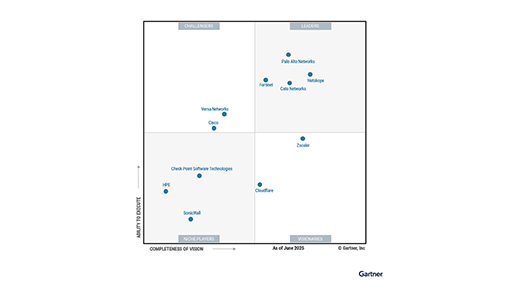
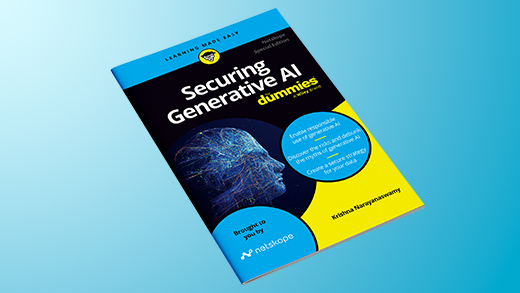

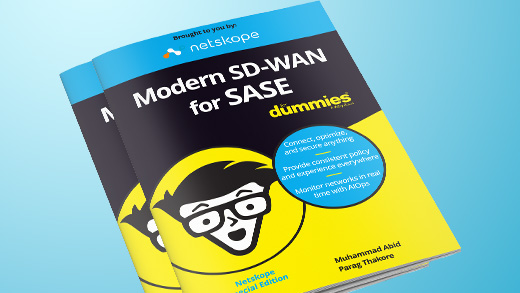

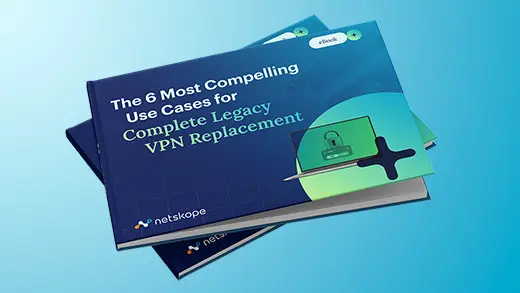

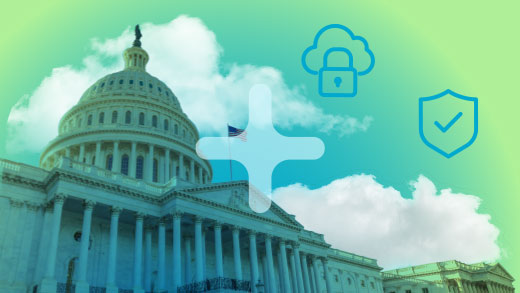












)

